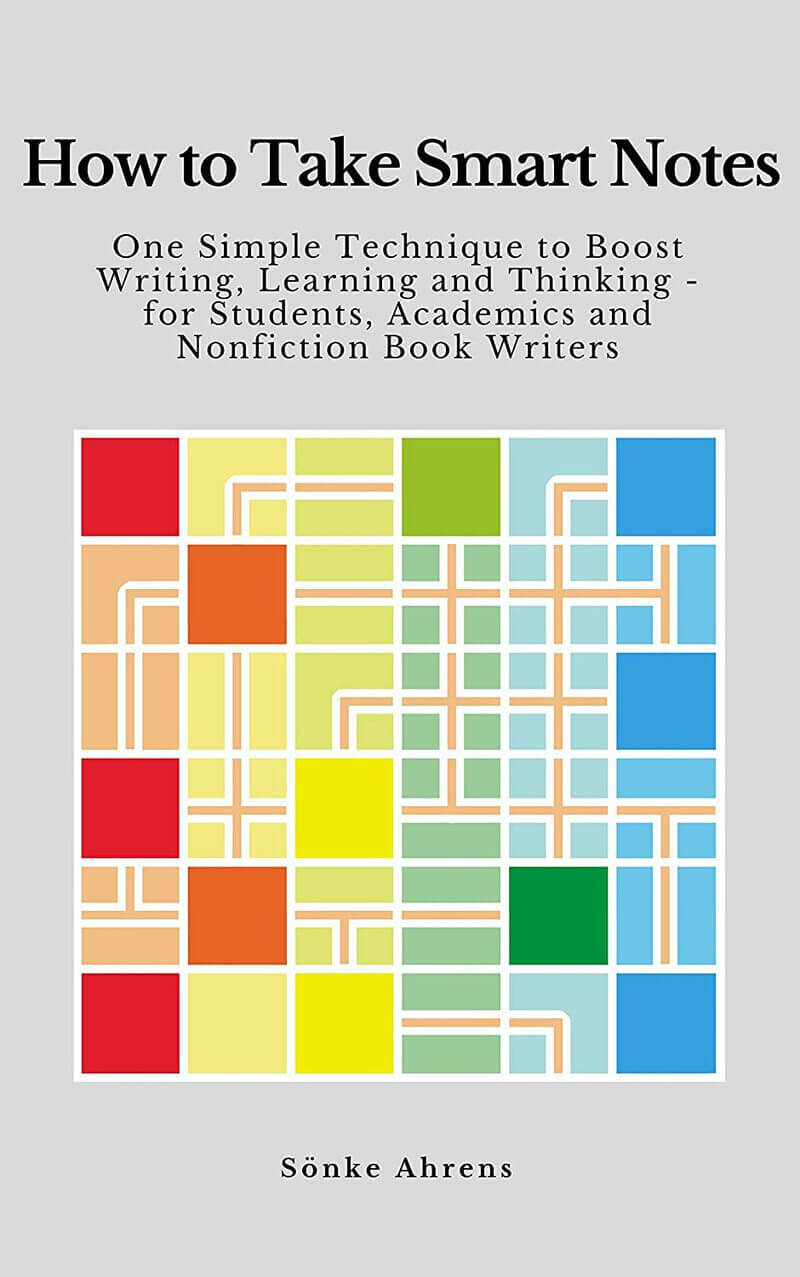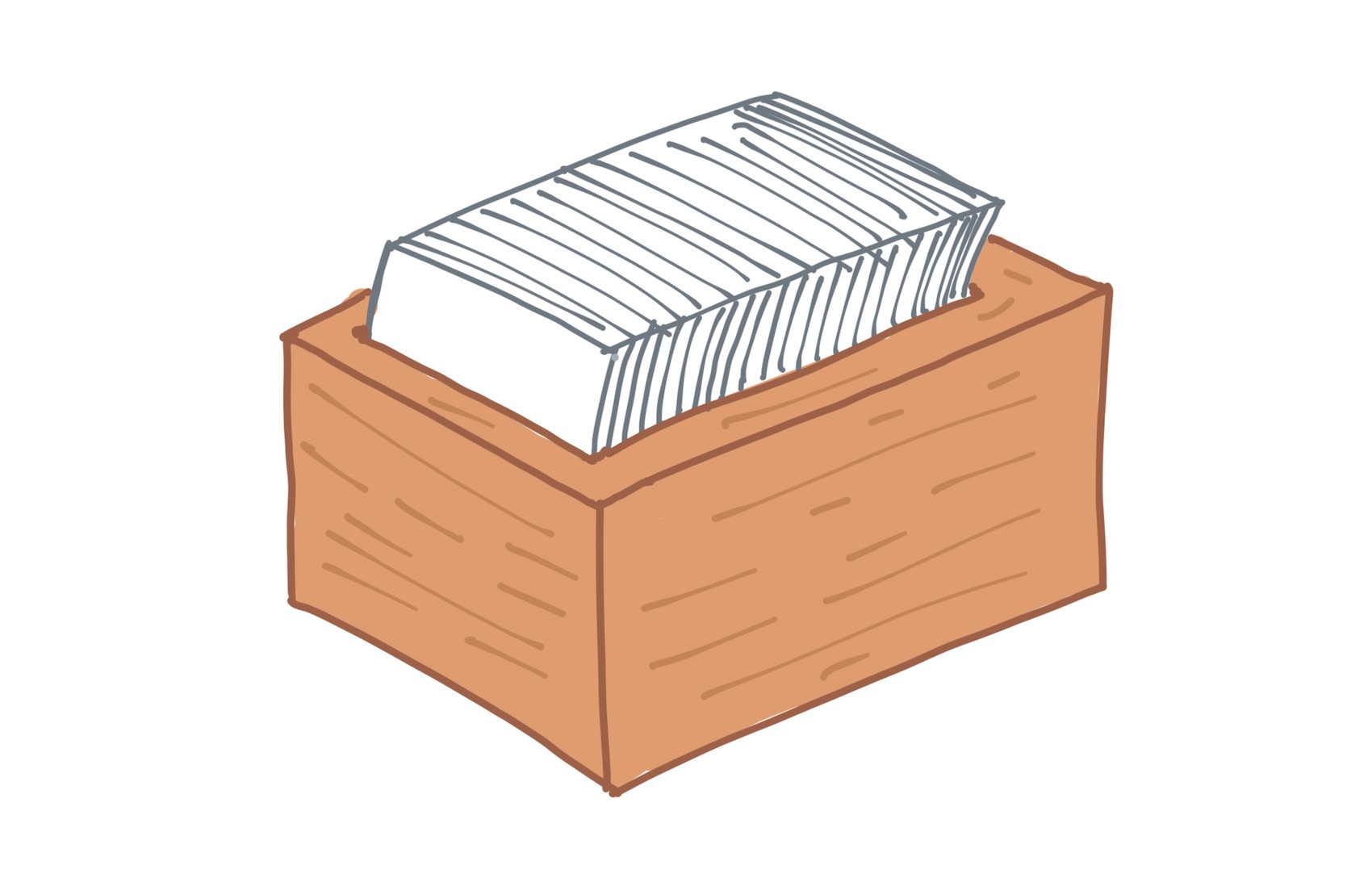How to Take Smart Notes
by Sönke Ahrens
- Nonfiction
- Shelves: writing, productivity
- 178 pages
- ISBN: 9781542866507 (Goodreads)
- Format: Kindle
- Buy on Amazon

Summary
How to Take Smart Notes is a dive into German sociologist Niklas Luhmann’s “slip-box” system (known in German as “zettelkasten”). The general idea is that the taking of notes in reading and research — the act of writing down thoughts or ideas — is the medium of learning, not merely a supportive technique.
The slip-box concept organizes thoughts in an organic way, allowing ideas to build upon one another regardless of their source. Connecting ideas between sources is a core source of knowledge synthesis. Lots of material we think of as original is really combining old ideas by stitching them together in new ways. As Ahrens says, you want to “let ideas mingle” in the slip-box, not be separated from one another in discrete notes about different resources.

The book covers the various note types and the role they play in the slip-box system. Not all notes are created equal, each plays a role in the complete system. Fleeting, literature, and permanent notes form a loose hierarchy (hierarchical in long-term value).
Studies on successful, productive people show that success is less attributable to willpower and more the result of creating smarter working environments conducive to focus, retention, and recall.
In the final third, Ahrens dives into an articulate, succinct overview of the steps to good writing. Great writing is built on a strong foundation for effective thinking, which the slip-box is intended to help us improve on. A quality system for idea-generation provides a compound interest effect — ”learning facilitates learning.”
Key Takeaways
- Writing is the facilitator of thinking, reading, learning, and understanding
- Note-taking isn’t perceived as a critical component to learning because of the delay between the act of taking notes and noticing its impacts — if we do it poorly, we don’t notice that impact until much later
- The three types of notes:
- Fleeting notes — Reminders of what’s in your head. They shouldn’t cause distraction or get you off track, just put them in the inbox for later processing to the slip-box.
- Literature notes — When reading something, make notes about the content. Be selective with quotes, and don’t copy verbatim. Rewriting in your own words is key to understanding.
- Permanent notes (Evergreen) — Notes detached from specific time, content, or material. Original ideas that deserve their own permanence to expand and interrelate with other notes.
- Simplicity is paramount — Like all productivity systems, too much tooling or too many moving parts are a detriment to quality note-taking
- Writing is the only thing that matters — “An idea kept private is as good as one you never had”
- Writing is non-linear — Good writing often happens gradually and is the consequence of novel assemblage of disparate-but-related ideas
- Things we understand are connected — Through rules, theories, narratives, logic, mental models, or explanations
- Ideas should develop bottom-up — Generate small, focused ideas from first principles, and let links and additional backing (or disconfirming) data accrue around them